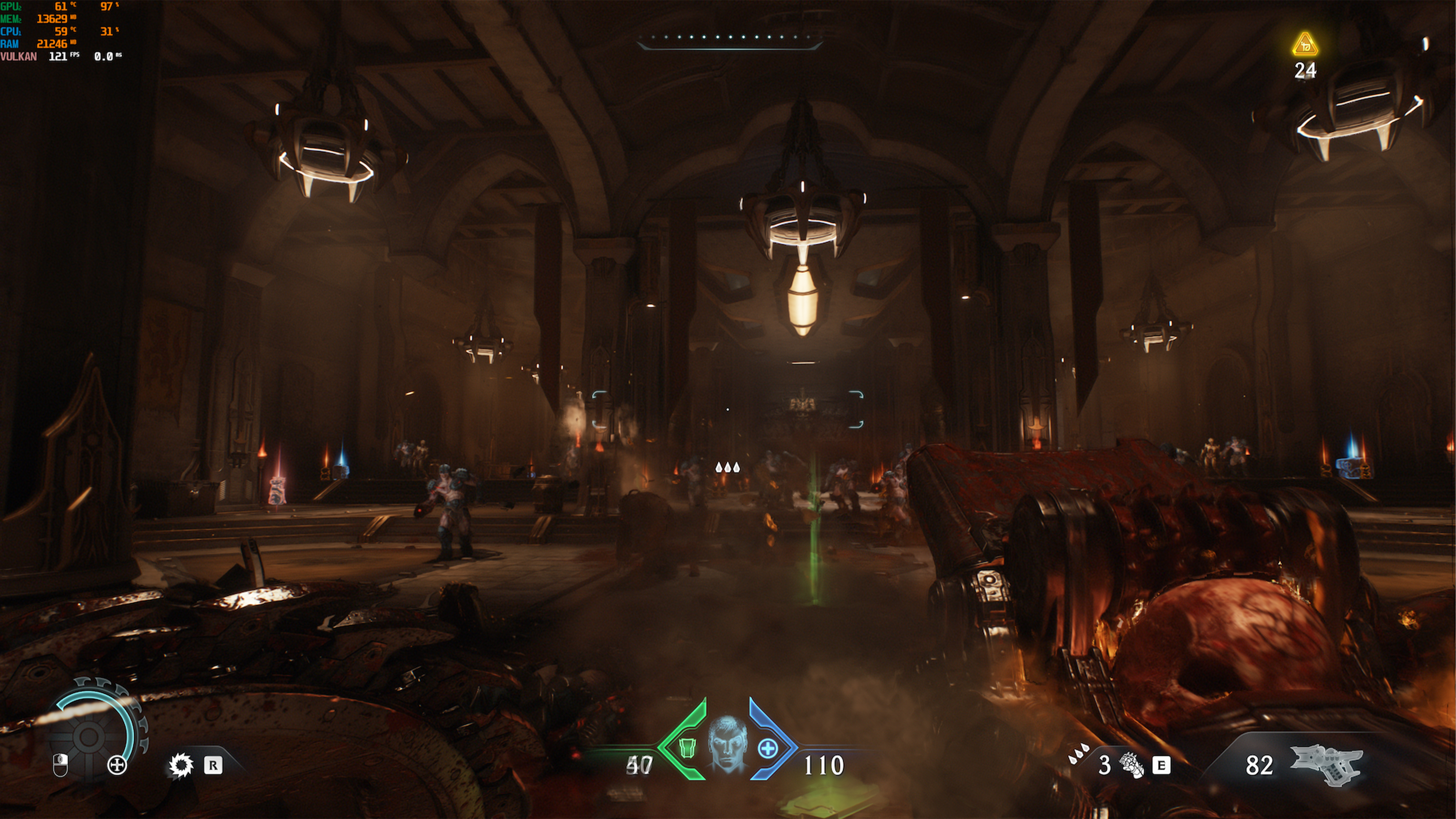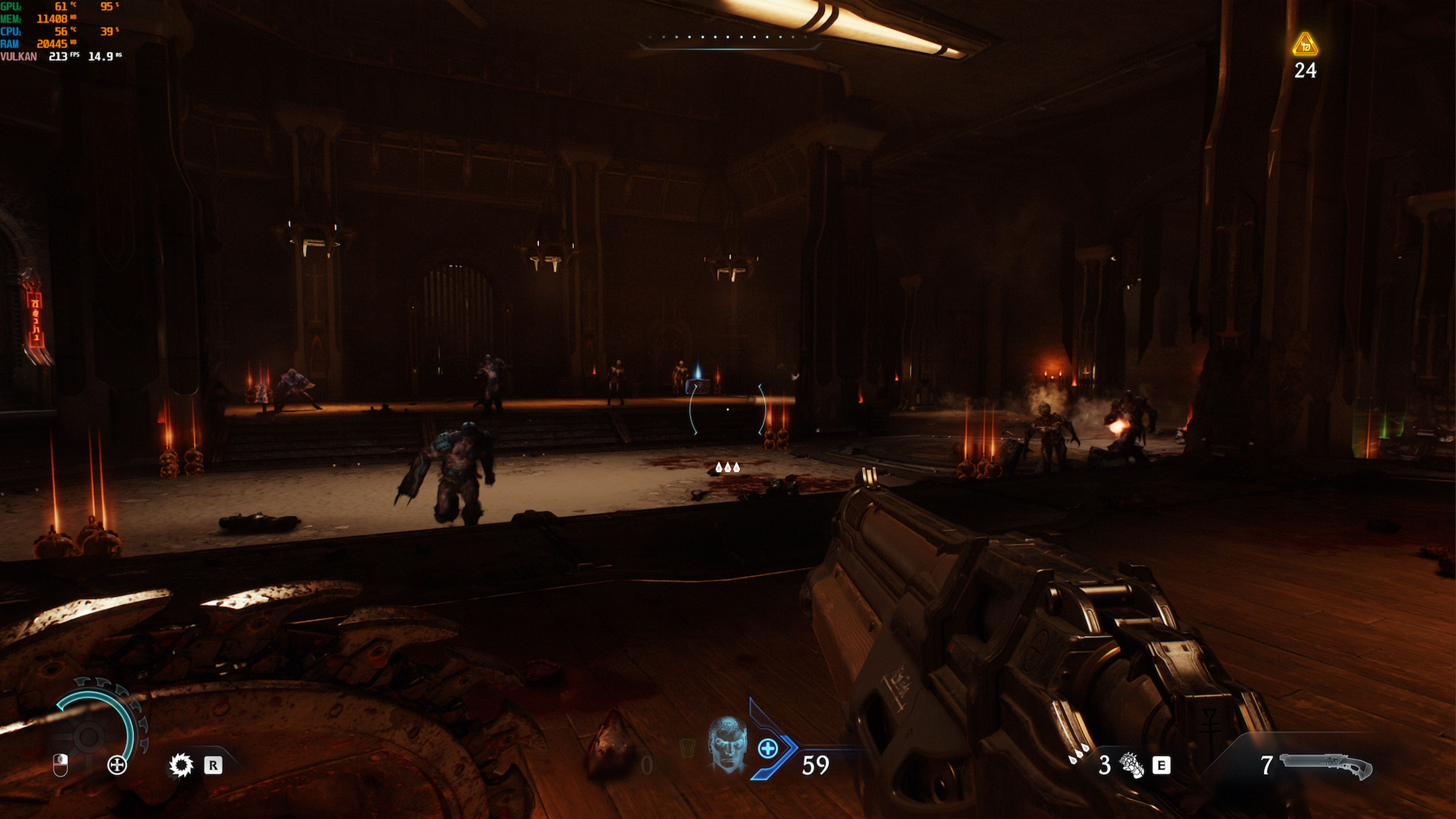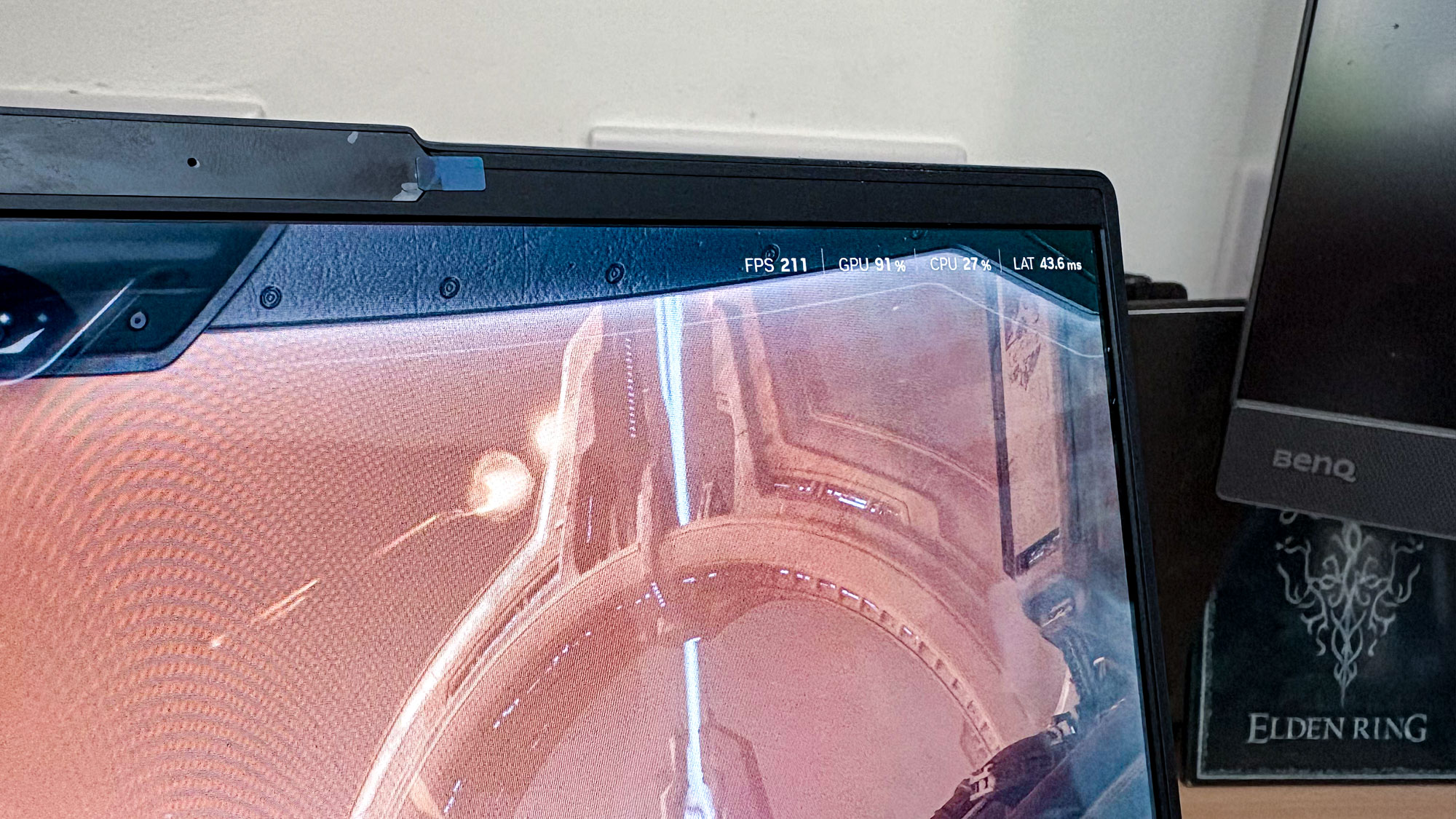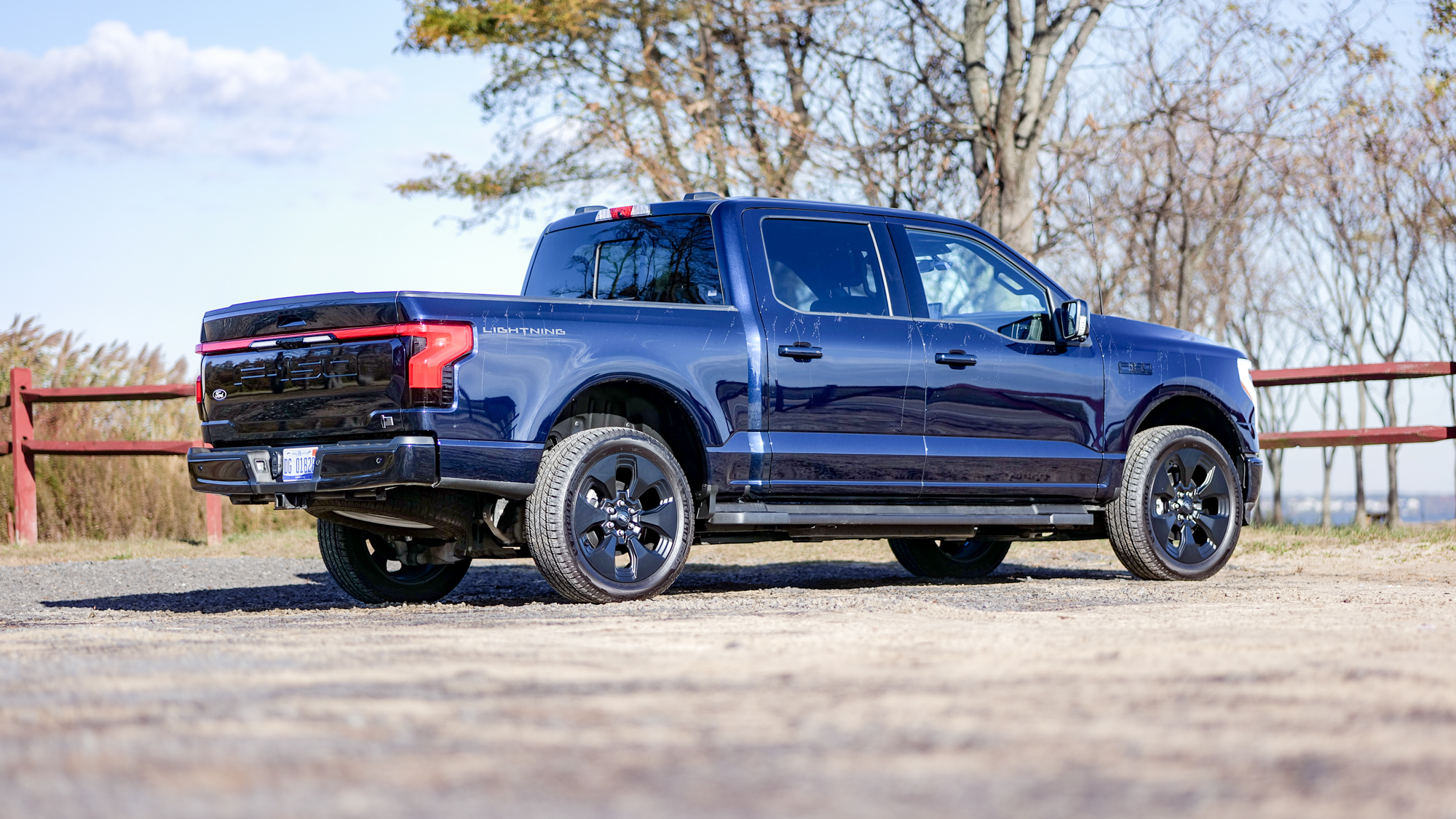I tested the Doom: The Dark Ages path tracing update — the difference is night and day but my GPU got hotter than hell
My gaming PC turned into a space heater, but it was worth it

Doom: The Dark Ages is not just a fantastically frenetic FPS to play, but it’s also a graphical masterpiece — blending both the artistic inspiration of so many death metal album covers, and adopting advanced techniques to give your demon-slaying a real cinematic quality.
I didn’t think it could look any better, but then I got to try out the path tracing patch and my mind was blown. You see, I’ve seen advanced ray tracing not really add much to games over the past few months. Cyberpunk is still neon-drenched whether you have it on or off, so what can it possibly add to something as dark as Doom?
Well, as it turns out, a lot. But at what cost to your GPU? I fired up my RTX 5070 Ti gaming tower and got to testing.
Still not near MSRP yet, but definitely heading in the right direction. If you're desperate for an RTX 5070 Ti and you're living in the U.S., this is the best price available right now.
Meanwhile, in the U.K., stock seems to be staying steady and the price is reflecting that with availability at RRP!
What is path tracing?
Path tracing (sometimes, you’ll hear it called full ray tracing) is a new level in simulating light and reflective materials — let’s break it down.
With ray tracing that you’d see on the likes of your PS5 Pro, you’re getting pretty lights and reflections that simulate the physics of only one bounce of a light ray or reflection. To do more is incredibly taxing, but we’re now at a point where gaming PCs are capable of it.
Stepping up to the next level, path tracing simulates how light interacts with objects in a much more complex way — packing multiple rays that bounce directly and indirectly off objects, calculates both reflections and refractions, and even works hand-in-hand with a game shadowing technique called ambient occlusion to provide real visual depth to a scene.
A visual stunner


Dark Ages was already a feast for the eyes, but path tracing does indeed take it to a whole new level that I didn’t expect.
Get instant access to breaking news, the hottest reviews, great deals and helpful tips.
The shadows of darker rooms without it could make things a little too dark, but the update brings a new brightness to things without looking like artificially placed lighting.
I was expecting this to be barely noticeable, but in reality the difference can be stark. In brightly-lit scenes, that may be the case, but since a lot of the game is gloomy, this is a real path tracing Tour de Force.
On top of that, the reflections in puddles (be it water or blood) or the refractions of light gleaming off the many weapons in your arsenal add a real cinematic quality to all your chaotic combat moments.
No longer do reflective surfaces or substances look like kitchen foil, and neither do rougher matte surfaces see any light bounce off. Everything interacts realistically, and it is a real sight to behold.
DLSS required
Just a quick heads-up on my time specifically with RTX 5070 Ti, though. Path tracing has a high cost to GPU memory and performance, so you’re going to need DLSS 4, multi-frame gen and all the neural rendering techniques to keep the frame rate at a playable level for something fast like Doom.
Without them, this drops sharply to around the 25-30 FPS level, so please AI trickery is a must-use.
By the numbers
During my many hours of testing, I took readings at particularly GPU-intensive moments of the game to gather an RTX 5070 Ti average.
Path tracing setting | Frame rate | Latency | GPU temperature (Fahrenheit) |
|---|---|---|---|
Path tracing OFF | 219 FPS | 14.6 ms | 138 |
Path tracing ON | 136 FPS | 24.4 ms | 156 |
That’s actually not as bad as I thought it was going to be, but that is still a hefty hit on frame rate in favor of path tracing. So it really becomes up to you on whether you’re a detail hog of a frame rate connoisseur.
Based on these numbers, if you are on anything less than an RTX 5070 Ti, it becomes a sliding scale of how much you value that improved lighting and reflection quality vs the performance.
I’ll have to continue testing on other GPUs to get a fuller picture, but given the average percentage gaps I’ve seen across them, you’ll see a roughly 22% drop for RTX 5070 (with more of a risk of topping off that 12GB of video memory), and the demand on RTX 5060 Ti would just put too much strain on the lesser number of Tensor and RT cores.
One thing that did alarm me slightly were the increased temperatures on the 5070 Ti. It’s not hitting my threshold of concern (180 degrees), and it didn’t exceed this for any extended session I had of more than three hours of gaming. But it’s starting to wander a little close to it.
In the defense of my GPU, it’s gotten unseasonably warm here — like I just came back from LA, and the U.K. is actually warmer than it was the entire week over in Cali! But regardless, that’s a dramatic uplift in performance demand and GPU temperatures.
Outlook

I turned on path tracing thinking it would just be like a 5% improvement for a big performance hit — flashier lights and nicer reflections that slowed down my demon-slaying antics a little too much. However, I couldn’t have been more wrong.
Path tracing is the real deal and the difference is stark in terms of adding impressive levels of depth and drama to each scene. The way the lighting realistically illuminates and reflections bounce make every bloodsoaked moment look like the most epic metal album cover you’ve seen.
With all this in mind, is it worth the average 40% hit on your GPU’s performance? The answer very much comes down to how important frame rate is to you. I do appreciate that uber-smoothness without path tracing turned — especially when parrying attacks.
But for what it does bring to the table, this is a gorgeous, gory glimpse of graphics going forward.
More from Tom's Guide
- The best handheld gaming consoles in 2025
- I tested the Nvidia GeForce RTX 5070 for 2 months — here’s why it’s good, but not great
- I dismissed the MSI Claw 8 AI+ — then Intel's game-changing update shut me up

Jason brings a decade of tech and gaming journalism experience to his role as a Managing Editor of Computing at Tom's Guide. He has previously written for Laptop Mag, Tom's Hardware, Kotaku, Stuff and BBC Science Focus. In his spare time, you'll find Jason looking for good dogs to pet or thinking about eating pizza if he isn't already.
You must confirm your public display name before commenting
Please logout and then login again, you will then be prompted to enter your display name.

